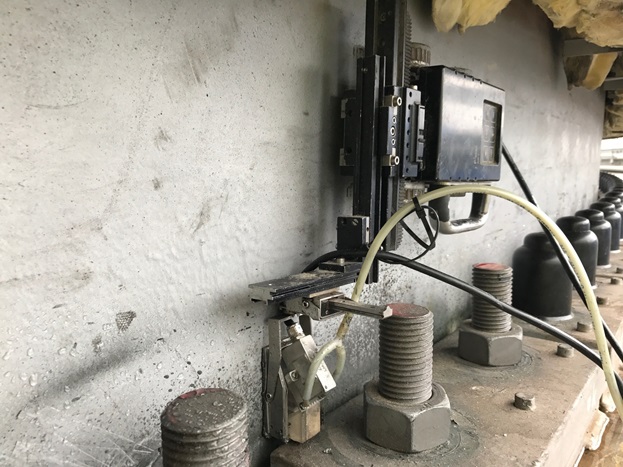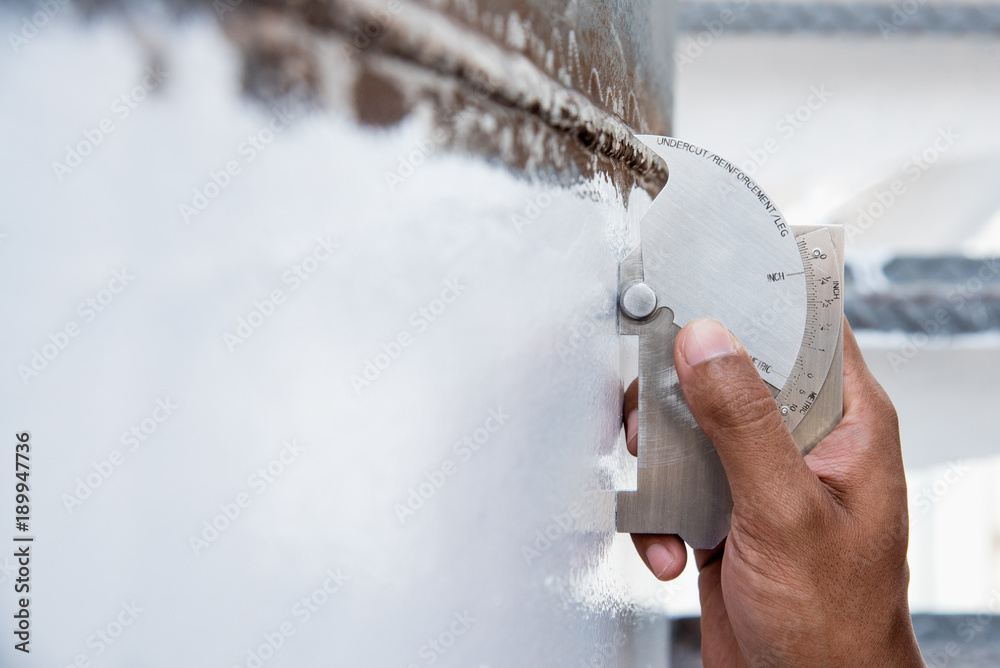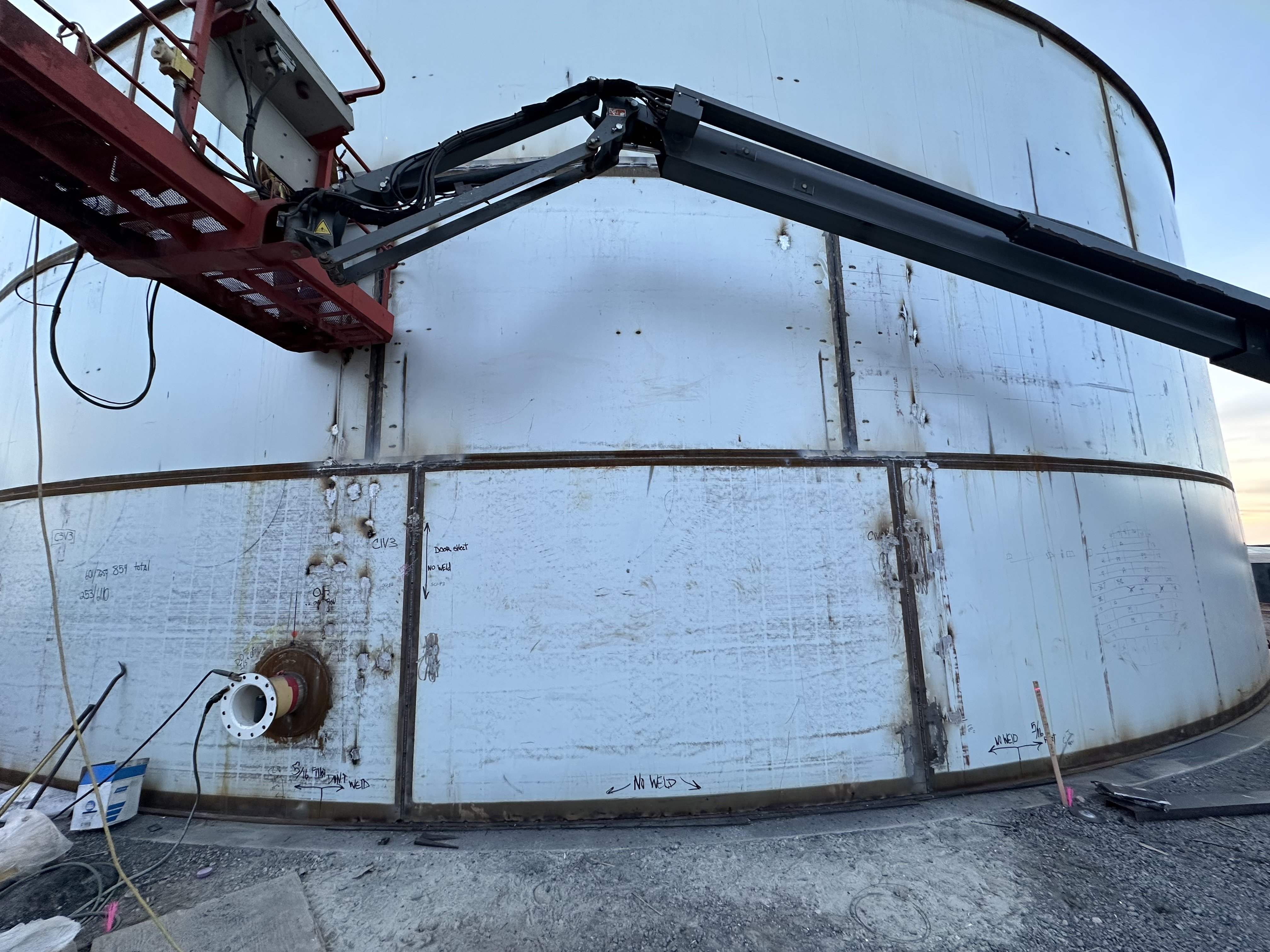How Tank Welding Inspection Stops Future Structural Failures
How Tank Welding Inspection Stops Future Structural Failures
Blog Article
An In-depth Introduction of Tank Welding Inspection Criteria and Methodologies for Improved Weld High Quality and Efficiency
The importance of welding assessment standards in the manufacturing of tanks can not be overstated, as they function as the backbone for ensuring weld stability and operational integrity. Numerous evaluation methods, consisting of aesthetic assessments and advanced non-destructive testing techniques, are vital in identifying prospective problems that can endanger performance. Furthermore, adhering to regulative standards not only improves weld top quality but additionally reduces the danger of expensive failings. As we discover the subtleties of these methodologies, it becomes critical to think about exactly how an organized approach can transform present methods and result in considerable enhancements in outcomes.
Value of Welding Evaluation Criteria

Welding evaluation criteria include a series of requirements, consisting of product requirements, welding procedures, and credentials of personnel included in the welding process. By implementing these standards, organizations can systematically determine and correct potential problems, therefore reducing the chance of expensive repair work or tragic failures. Additionally, rigorous evaluation practices promote a society of responsibility and accuracy, urging welders to maintain high levels of craftsmanship.

Typical Welding Assessment Strategies


Ultrasonic Testing (UT) is another prevalent strategy, making use of high-frequency audio waves to identify inner imperfections that might not show up externally. This method is specifically effective for recognizing voids or inclusions within the weld steel. Magnetic Particle Examining (MT) is also extensively made use of, especially for ferromagnetic products, as it discloses surface area and near-surface problems through the application of electromagnetic fields and ferrous bits.
Additionally, Fluid Penetrant Screening (PT) detects surface-breaking defects by using a penetrant to the weld and then using a designer to attract out the penetrant. Each of these methods contributes to a comprehensive inspection approach, making sure that welds meet the rigorous high quality criteria required in container building.
Regulatory Criteria and Conformity
Regulative standards and compliance are crucial elements in making sure the visit this site right here safety and security and integrity of bonded structures in storage tank building - Tank Welding Inspection. These requirements offer to develop minimum needs for product homes, welding procedures, and assessment methods, thereby minimizing the risk of architectural failings and enhancing total performance
Secret companies, such as the American Society of Mechanical Engineers (ASME) and the American Welding Culture (AWS), offer standards that are widely embraced in the sector. Compliance with these requirements not just ensures adherence to ideal methods however also meets legal and legal commitments, safeguarding the rate of interests of stakeholders.
Governing bodies frequently mandate adherence to certain codes, such as ASME Code Area IX for welding qualifications and API 650 for welded containers. These codes lay out needs for welding strategies, qualifications of workers, and screening approaches to validate weld integrity.
Regular audits and evaluations are important to keeping conformity, as they aid identify discrepancies from developed criteria. Non-compliance can lead to considerable charges, job delays, and security risks. Therefore, a robust understanding of regulative standards and a commitment to compliance are paramount in accomplishing premium and long you can try this out lasting bonded tank frameworks.
Non-Destructive Examining Approaches
Just how can the stability of welded structures be assured without causing damages? Non-destructive screening (NDT) techniques provide a robust remedy, enabling assessors to review weld top quality without endangering the product - Tank Welding Inspection. Among the most usual NDT methods are ultrasonic testing (UT), radiographic testing (RT), magnetic fragment testing (MT), and dye penetrant screening (PT)
Radiographic screening includes passing X-rays or gamma rays via the weld, producing images that expose structural flaws such as cracks or gaps. This technique is very useful for examining the integrity of complicated welds.
Magnetic particle screening is suited for ferromagnetic materials, where magnetic fields disclose surface and near-surface stoppages. Dye penetrant screening utilizes a liquid color to highlight surface-breaking defects, making it a reliable method for non-porous products.
Each of these NDT methods has distinct benefits, enabling thorough analyses customized to specific products and welding procedures. By applying these strategies, markets can make certain the reliability and safety of bonded frameworks, eventually enhancing general efficiency.
Enhancing Weld High Quality With Assessment
Reliable inspection plays an important duty in boosting weld quality, functioning as a crucial checkpoint in the manufacture procedure. By identifying potential flaws early, examinations minimize the threat of compromised structural integrity and guarantee compliance with market requirements. Using a mix of aesthetic examinations, non-destructive testing (NDT) methods, and mechanical assessments, inspectors can spot problems such as porosity, fractures, and incomplete fusion.
Implementing a robust inspection protocol not only improves the overall quality of welds but also fosters a society of liability amongst welders and makers. Routine training and certification of assessment workers make sure that they are outfitted with the needed skills to recognize and address potential troubles properly. This aggressive technique reduces rework and connected costs, ultimately adding to project performance.
Additionally, comprehensive paperwork of evaluation searchings for gives important insights right into reoccuring problems, helping with continuous renovation in welding methods. By leveraging advanced modern technologies, such as automated ultrasonic screening or digital radiography, weld top quality can be improved through more precise assessments. To conclude, a strenuous inspection procedure is vital in accomplishing top quality welds, making certain security, integrity, and durability in container construction.
Conclusion
To conclude, the implementation of rigorous tank welding examination requirements and Bonuses techniques is essential for guaranteeing weld integrity and performance. By utilizing a mix of visual inspections, non-destructive screening methods, and adherence to regulatory criteria, organizations can effectively recognize and mitigate potential flaws. Cultivating a culture of liability amongst welders even more boosts the quality of welding processes. Inevitably, these practices contribute to lowered structural failures, reduced fixing costs, and enhanced functional efficiency within the market.
Report this page